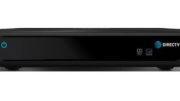If you’re a DIRECTV DIYer, you’ve probably heard the term “DECA.” A DECA is a simple device that converts Ethernet to coax, and coax to Ethernet. It was a mandatory choice for DIRECTV customers for about a decade. But does your system need one today?
It probably doesn’t.
The neat thing about DIRECTV receivers is that the internet signal travels along the same coaxial cable as the TV signal. This means that if your Genie DVR is hooked to the internet, or if there’s a separate device that bridges your coax lines and your Ethernet connection, you don’t need a separate internet connection at every receiver. For the most part you don’t even need a separate adapter to connect to the internet. Your Genie DVR can do it over Wi-Fi or wired Ethernet. It’s just not a problem, and not something you need to consider.
Unless, of course, your equipment is really old.
How old? You can’t take advantage of this one-cable solution unless you’re using DIRECTV’s SWM system. This system has been DIRECTV’s standard install since 2010 or so, and while it’s still possible to get equipment that works without it, all of the current DIRECTV Genie hardware requires it.
However, you could still need some sort of special dongle to connect your receiver to the internet. While all of today’s hardware does this trick magically, older DIRECTV equipment needed a special device to separate out the network signal from the TV signal. That piece of equipment, shown above, is called a DECA, short for DIRECTV Ethernet/Coaxial Adapter. It does just that. Coax goes in, coax and ethernet both go out. Both lines go into the receiver so that it can work as it should.
What about older receivers?
If you have an older receiver on this list, you should have a DECA if it’s installed in a SWM system.
H21 • H23 • HR20 • HR21 • HR22 • HR23 • THR22 (TiVo)
All of these products are so old that they’re not offered anymore. They’re so old that if you have one, DIRECTV doesn’t even want it back if you upgrade. If you don’t know the model of your older receiver, press the MENU button on your remote. Go to Settings&Help and Settings. Then, press the DASH button to the left of the zero and you’ll see a graphic like this:

which will tell you if you are using the SWM system.
If you have an older receiver that isn’t on that list, you should use a band stop filter if you have any newer equipment. If any of the receivers in your system are connecting to the internet, the signal will be too strong for your older receivers. Adding the band stop filter stops that.
What if your receiver or DVR has an Ethernet port?
Some non-Genie receivers and DVRs have Ethernet ports built in. At one point, DIRECTV’s plan was to ask customers to use wired Ethernet to every receiver and DVR. This wasn’t a popular choice, and the plan was scrapped. But, the hardware wasn’t ever changed. So, you have a lot of DIRECTV equipment out there with Ethernet ports. Sometimes it will work, sometimes not. It’s not supported by DIRECTV at all. It’s generally best to pretend that Ethernet port isn’t there at all.
Of course, a lot of what we’re talking about is older technology. It’s getting to be less and less of a problem. However, the thing about DIRECTV equipment is it’s very reliable so you might still have some very old stuff out there. At Solid Signal we’re here to help you get your TV your way, which is why we still have a good selection of DECAs and band stop filters.
Get what you need from Solid Signal
Solid Signal is your source for DIRECTV equipment and accessories. Shop at Solid Signal for the same parts and accessories you’ll find on DIRECTV installer trucks. If you need help or want to upgrade your system, call us at 888-233-7563 or fill out the form below!





